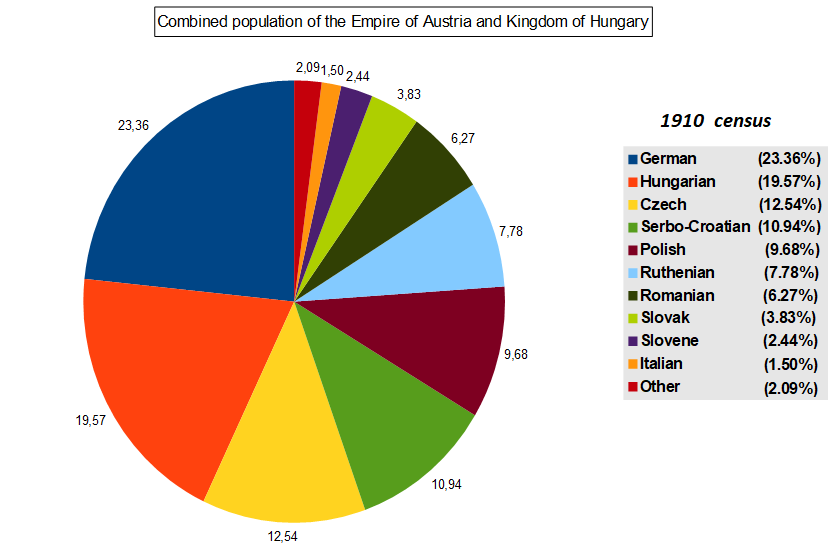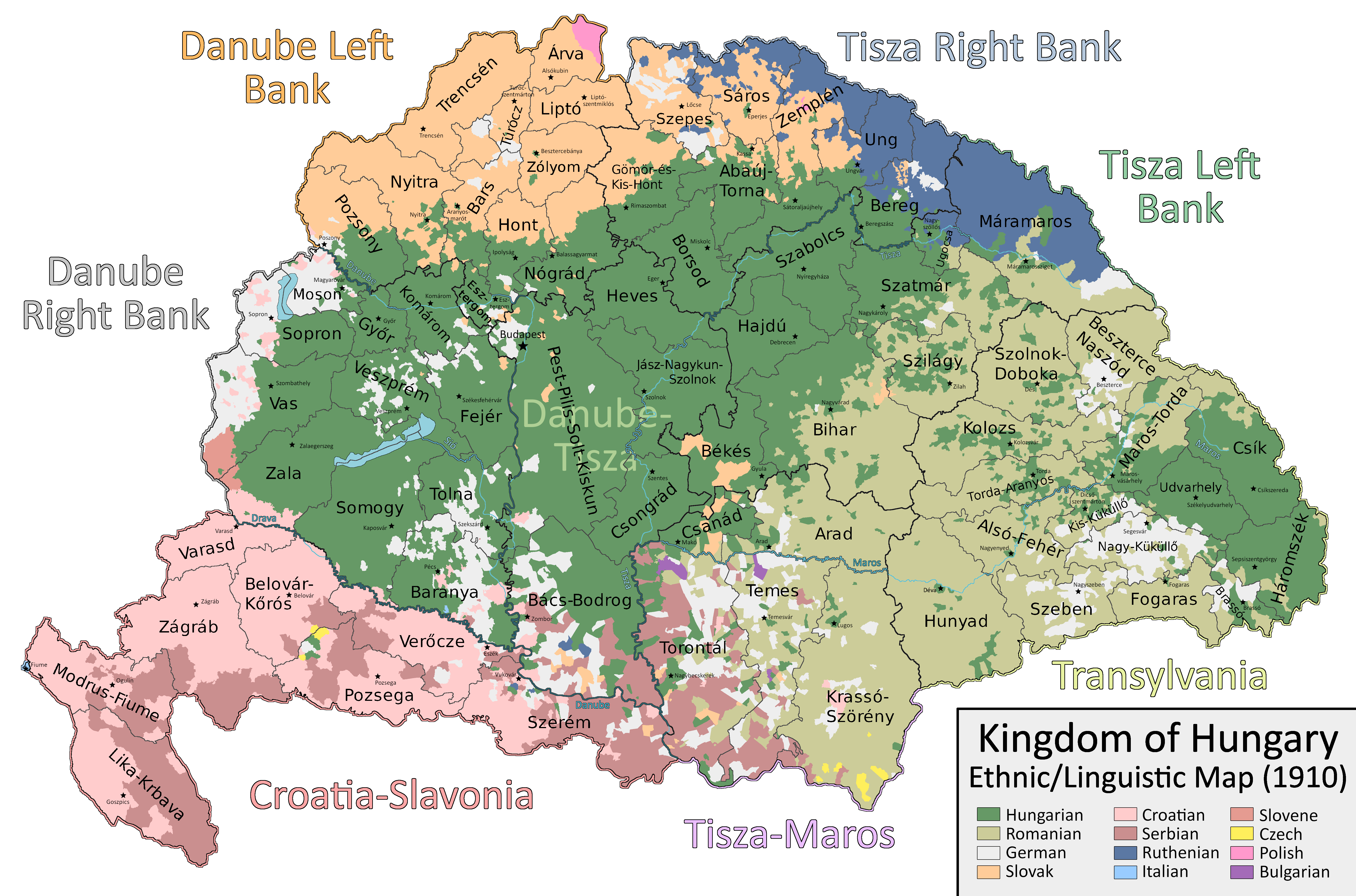Ethnic And Religious Composition Of Austria–Hungary on:
[Wikipedia]
[Google]
[Amazon]
The ethno-linguistic composition of




Who Is Who? National Classification in Imperial Austria, 1867–1914
. ''The Journal of Modern History''. 96 (2): 291–331. People from Austria-Hungary by descent, * Society of Austria-Hungary
Austria-Hungary
Austria-Hungary, also referred to as the Austro-Hungarian Empire, the Dual Monarchy or the Habsburg Monarchy, was a multi-national constitutional monarchy in Central Europe#Before World War I, Central Europe between 1867 and 1918. A military ...
according to the census of 31 December 1910 was as follows:
Population


Largest cities
Data: census in 1910Kogutowicz Károly, Hermann Győző: ''Zsebatlasz: Naptárral és statisztikai adatokkal az 1914. évre.'' Magyar Földrajzi Intézet R. T., Budapest 1913, S. 69, 105.Languages
In the Austrian Empire (Cisleithania), the census of 1911 recorded ''Umgangssprache'', everyday language. Jews and those using German in offices often stated German as their ''Umgangssprache'', even when having a different ''Muttersprache''. TheIstro-Romanians
The Istro-Romanians ( or ) are a Romance languages, Romance ethnic group native to or associated with the Istria, Istrian Peninsula. Historically, they inhabited vast parts of it, as well as the western side of the island of Krk until 1875. Howe ...
were counted as Romanians
Romanians (, ; dated Endonym and exonym, exonym ''Vlachs'') are a Romance languages, Romance-speaking ethnic group and nation native to Central Europe, Central, Eastern Europe, Eastern, and Southeastern Europe. Sharing a Culture of Romania, ...
.
In the Kingdom of Hungary (Transleithania), the 1910 census was based on mother tongue. According to the census, 54.4% of the inhabitants of Hungary were recorded to speak Hungarian as their native language. This number included the Jewish ethnic group (around 5% of the population) who were overwhelmingly Hungarian-speaking (the Jews tending to declare German as mother tongue due to the immigration of Jews of Yiddish/German mother tongue).
Cisleithanian states (Austrian Empire)
Transleithanian lands (Kingdom of Hungary)


Historical regions
The Germans in Croatia were mainly living in the eastern parts of the country where they had been settled along the Drava and Danube rivers, and the formerMilitary Frontier
The Military Frontier (; sh-Cyrl-Latn, Војна крајина, Vojna krajina, sh-Cyrl-Latn, Војна граница, Vojna granica, label=none; ; ) was a borderland of the Habsburg monarchy and later the Austrian and Austro-Hungari ...
(), after the Habsburg (re)conquest of the area from the Ottomans
Ottoman may refer to:
* Osman I, historically known in English as "Ottoman I", founder of the Ottoman Empire
* Osman II, historically known in English as "Ottoman II"
* Ottoman Empire
The Ottoman Empire (), also called the Turkish Empir ...
in 1687.
Religions
See also
*Demographics of the Kingdom of Hungary by county
The following table shows the linguistic composition of each Hungarian county according to the Hungarian Census of 1910.
See also
*Demographics of Hungary
*Demographic history of Syrmia
References
{{Reflist
Sources
*Révai Nagy LexikonE ...
*Minority Treaties
The Minority Treaties are treaties, League of Nations mandates, and unilateral declarations made by countries applying for membership in the League of Nations that conferred basic rights on all the inhabitants of the country without distinction ...
*Treaty of Saint-Germain-en-Laye (1919)
The Treaty of Saint-Germain-en-Laye () was signed on 10 September 1919 by the victorious Allies of World War I on the one hand and by the Republic of German-Austria on the other. Like the Treaty of Trianon with Kingdom of Hungary (1920–1946 ...
*Treaty of Trianon
The Treaty of Trianon (; ; ; ), often referred to in Hungary as the Peace Dictate of Trianon or Dictate of Trianon, was prepared at the Paris Peace Conference (1919–1920), Paris Peace Conference. It was signed on the one side by Hungary ...
(1920)
Sources
*References
{{Reflist * William R. Shepherd: "Distribution of Races in Austria-Hungary", ''Historical Atlas'', 191Further reading
* Steidl, Annemarie et al. ''From a Multiethnic Empire to a Nation of Nations: Austro-Hungarian Migrants in the US, 1870–1940'' (Innsbruck: Studien Verlag, 2017). 354 pp. * King, Jeremy (2024).Who Is Who? National Classification in Imperial Austria, 1867–1914
. ''The Journal of Modern History''. 96 (2): 291–331. People from Austria-Hungary by descent, * Society of Austria-Hungary